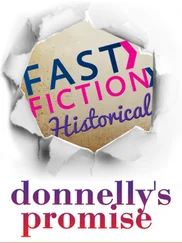Ignatius Donnelly - Antediluvian world
Здесь есть возможность читать онлайн «Ignatius Donnelly - Antediluvian world» весь текст электронной книги совершенно бесплатно (целиком полную версию без сокращений). В некоторых случаях можно слушать аудио, скачать через торрент в формате fb2 и присутствует краткое содержание. Жанр: Старинная литература, на русском языке. Описание произведения, (предисловие) а так же отзывы посетителей доступны на портале библиотеки ЛибКат.
- Название:Antediluvian world
- Автор:
- Жанр:
- Год:неизвестен
- ISBN:нет данных
- Рейтинг книги:5 / 5. Голосов: 1
-
Избранное:Добавить в избранное
- Отзывы:
-
Ваша оценка:
- 100
- 1
- 2
- 3
- 4
- 5
Antediluvian world: краткое содержание, описание и аннотация
Предлагаем к чтению аннотацию, описание, краткое содержание или предисловие (зависит от того, что написал сам автор книги «Antediluvian world»). Если вы не нашли необходимую информацию о книге — напишите в комментариях, мы постараемся отыскать её.
Antediluvian world — читать онлайн бесплатно полную книгу (весь текст) целиком
Ниже представлен текст книги, разбитый по страницам. Система сохранения места последней прочитанной страницы, позволяет с удобством читать онлайн бесплатно книгу «Antediluvian world», без необходимости каждый раз заново искать на чём Вы остановились. Поставьте закладку, и сможете в любой момент перейти на страницу, на которой закончили чтение.
Интервал:
Закладка:
This view is also held by M. de Fallenberg, in the “Bulletin de la Societe des Sciences” of Berne. (See “Smithsonian Rep.,” 1865-66, p.
383.) He says,
ORNAMENTS
OF
THE
BRONZE
AGE
“It seems surprising that the nearest neighbors of the Phoenicians—the Greeks, the Egyptians, the Etruscans, and the Romans—should have manufactured plumbiferous bronzes, while the Phoenicians carried to the people of the North only pure bronzes without the alloy of lead. If the civilized people of the Mediterranean added lead to their bronzes, it can scarcely be doubted that the calculating Phoenicians would have done as much, and, at least, with distant and half-civilized tribes, have replaced the more costly tin by the cheaper metal. . . . On the whole, then, I consider that the first knowledge of bronze may have been conveyed to the populations of the period tinder review not only by the Phoenicians, but by other civilized people dwelling more to the south-east.”
Professor E. Desor, in his work on the “Lacustrian Constructions of the Lake of Neuchatel,” says,
“The Phoenicians certainly knew the use of iron, and it can scarcely be conceived why they should have excluded it from their commerce on the Scandinavian coasts. . . . The Etruscans, moreover, were acquainted with the use of iron as well as the Phoenicians, and it has already been seen that the composition of their bronzes is different, since it contains lead, which is entirely a stranger to our bronze epoch. . . . We must look, then, beyond both the Etruscans and Phoenicians in attempting to identify the commerce of the Bronze Age of our palafittes. It will be the province of the historian to inquire whether, exclusive of Phoenicians and Carthaginians, there may not have been some maritime and commercial people who carried on a traffic through the ports of Liguria with the populations of the age of bronze of the lakes of Italy before the discovery of iron. We may remark, in passing, that there is nothing to prove that the Phoenicians were the first navigators. History, on the Contrary, positively mentions prisoners, under the name of Tokhari, who were vanquished in a naval battle fought by Rhamses III. in the thirteenth century before our era, and whose physiognomy, according to Morton, would indicate the Celtic type. Now there is room to suppose that if these Tokhari were energetic enough to measure their strength on the sea with one of the powerful kings of Egypt, they must, with stronger reason, have been in a condition to carry on a commerce along the coasts of the Mediterranean, and perhaps of the Atlantic. If such a commerce really existed before the time of the Phoenicians, it would not be limited to the southern slope of the Alps; it would have extended also to the people of the age of bronze in Switzerland. The introduction of bronze would thus ascend to a very high antiquity, doubtless beyond the limits of the most ancient European races.”
For the merchants of the Bronze Age we must look beyond even the Tokhari, who were contemporaries of the Phoenicians.
The Tokhari, we have seen, are represented as taken prisoners, in a sea-fight with Rhamses III., of the twentieth dynasty, about the thirteenth century B.C. They are probably the Tochari of Strabo. The accompanying figure represents one of these people as they appear upon the Egyptian monuments. (See Nott and Gliddon’s “Types of Mankind,” p.
108.) Here we have, not an inhabitant of Atlantis, but probably a representative of one of the mixed races that sprung from its colonies.
Dr. Morton thinks these people, as painted on the Egyptian monuments, to have “strong Celtic features. Those familiar with the Scotch Highlanders may recognize a speaking likeness.”
It is at least interesting to have a portrait of one of the daring race who more than three thousand years ago left the west of Europe in their ships to attack the mighty power of Egypt.
They were troublesome to the nations of the East for many centuries; for in 700 B.C. we find them depicted on the Assyrian monuments. This figure represents one of the Tokhari of the time of Sennacherib. It will be observed that the headdress (apparently of feathers) is the same in both portraits, al, though separated by a period of six hundred years.
It is more reasonable to suppose that the authors of the bronze Age of Europe were the people described by Plato, who were workers in metal, who were highly civilized, who preceded in time all the nations which we call ancient. It was this people who passed through an age of copper before they reached the age of bronze, and whose colonies in America represented this older form of metallurgy as it existed for many generations.
Professor Desor says:
“We are asked if the preparation of bronze was not an indigenous invention which had originated on the slopes of the Alps? . . . In this idea we acquiesced for a moment. But we are met by the objection that, if this were so, the natives, like the ancient tribes of America, would have commenced by manufacturing utensils of copper; yet thus far no utensils of this metal have been found except a few in the strand of Lake Garda. The great majority of metallic objects is of bronze, which necessitated the employment of tin, and this could not be obtained except by commerce, inasmuch as it is a stranger to the Alps. It would appear, therefore, more natural to admit that the art of combining tin with copper—in other words, that the manufacture of bronze—was of foreign importation.” He then shows that, although copper ores are found in the Alps, the probability is that even “the copper also was of foreign importation. Now, in view of the prodigious quantity of bronze manufactured at that epoch, this single branch of commerce must itself have necessitated the most incessant commercial communications.”
And as this commerce could not, as we have seen, have been carried on by the Romans, Greeks, Etruscans, or Phoenicians, because their civilizations flourished during the Iron Age, to which this age of bronze was anterior, where then are we to look for a great maritime and commercial people, who carried vast quantities of copper, tin, and bronze (unalloyed by the lead of the south of Europe) to Denmark, Norway, Sweden, Ireland, England, France, Spain, Switzerland, and Italy?
Where can we find them save in that people of Atlantis, whose ships, docks, canals, and commerce provoked the astonishment of the ancient Egyptians, as recorded by Plato. The Toltec root for water is Atl; the Peruvian word for copper is Anti (from which, probably, the Andes derived their name, as there was a province of Anti on their slopes): may it not be that the name of Atlantis is derived from these originals, and signified the copper island, or the copper mountains in the sea? And from these came the thousands of tons of copper and tin that must, during the Bronze Age, have been introduced into Europe? There are no ancient works to indicate that the tin mines of Cornwall were worked for any length of time in the early days (see “Prehistoric Times,” p. 74).
Morlot has pointed out that the bronze implements of Hallstadt, in Austria, were of foreign origin, because they contain no lead or silver.
Or, if we are to seek for the source of the vast amount of copper brought into Europe somewhere else than in Atlantis, may it not be that these supplies were drawn in large part from the shores of Lake Superior in America? The mining operations of some ancient people were there carried on upon a gigantic scale, not only along the shores of the lake but even far out upon its islands. At Isle Royale vast works were found, reaching to a depth of sixty feet; great intelligence was shown in following up the richest veins even when interrupted; the excavations were drained by underground drains. On three sections of land on this island the amount of mining exceeded that mined in twenty years in one of our largest mines, with a numerous force constantly employed. In one place the excavations extended in a nearly continuous line for two miles. No remains of the dead and no mounds are found near these mines: it would seem, therefore, that the miners came from a distance, and carried their dead back with them. Henry Gillman (“Smithsonian Rep.,”
Читать дальшеИнтервал:
Закладка:
Похожие книги на «Antediluvian world»
Представляем Вашему вниманию похожие книги на «Antediluvian world» списком для выбора. Мы отобрали схожую по названию и смыслу литературу в надежде предоставить читателям больше вариантов отыскать новые, интересные, ещё непрочитанные произведения.
Обсуждение, отзывы о книге «Antediluvian world» и просто собственные мнения читателей. Оставьте ваши комментарии, напишите, что Вы думаете о произведении, его смысле или главных героях. Укажите что конкретно понравилось, а что нет, и почему Вы так считаете.












